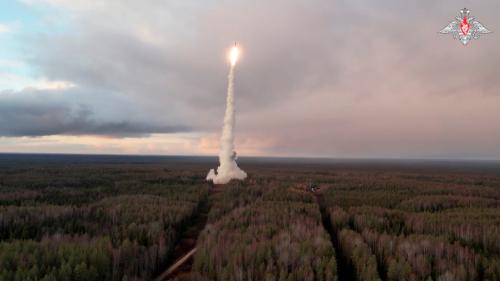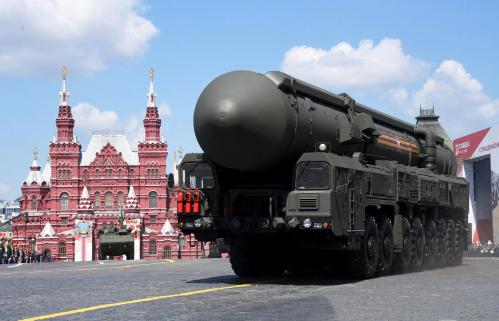Reproduced by permission of Current History (September 2004).
The Kims, father and son, have not managed to
rule North Korea for more than 50 years by
making foolish decisions. This basic insight
needs to be kept in mind when trying to understand
North Korea’s decision to develop nuclear weapons.
Exactly when that decision was made is as unclear as
why it was made, but we do know enough to say that
North Korea was goaded in part by changes in the
international political situation, the challenge of
competing with South Korea, and the Kims’ need to
dominate domestic politics. Examining each of these
influences can help to explain where North Korea’s
nuclear program comes from, where it is headed, and
what might redirect it away from nuclear weapons
applications. Whatever course of action the United
States and the rest of the international community
take, it must be understood that the ultimate goal of
North Korea’s nuclear weapons program is to keep a
Kim in power, not to assure the security of the North
Korean state or improve the welfare of the North
Korean people.
THE MILITARY FIRST . . .
Given its national priorities, it would be surprising
if the North Korean regime did not exploit its
nuclear capabilities to make nuclear weapons. As the
party newspaper Nodong Sinmun reminded its readers
this May, “Our socialism is, first of all, a unique
socialism with its root originating in the barrel of a
gun.” North Korea’s founder, Kim Il-sung, made a
name for himself as a guerrilla fighter affiliated with
the Chinese First Route Army fighting the Japanese
during World War II, later becoming a captain in the
Soviet army after he was chased out of China by the
Japanese. During the final years of the war, Kim was
stationed in a training camp in Siberia. In the political
vacuum left by the departing Japanese colonial
administration, the Soviet Army that took control of
the northern half of the Korean peninsula brought
with them Captain Kim Il-sung to take the lead in
creating a Stalinist client state.
Kim’s approach to reunifying the two halves of
the Korean peninsula was to launch an attack
against South Korea on June 25, 1950, beginning a
disastrous war from which he had to be extricated
by Chinese forces. After the war, Kim spent the rest
of the decade rebuilding his shattered economy and
consolidating his political position by purging rivals,
often blaming them for his own Korean War mistakes.
Once the foundations of a heavy-industrydominated
command economy had been rebuilt, he
returned to what he knew best: the pursuit of military
power. Over the objection of some of his associates,
who believed that efforts should be made to
develop a more balanced economy, Kim in 1962
adopted the policy of “four military lines,” which
called for the arming of the entire country in preparation
for another fight to reunite the peninsula
under communism.
View Full Article (PDF—58kb) Get Adobe Acrobat Reader
The Brookings Institution is committed to quality, independence, and impact.
We are supported by a diverse array of funders. In line with our values and policies, each Brookings publication represents the sole views of its author(s).


Commentary
North Korea’s Nuclear Politics
September 1, 2004